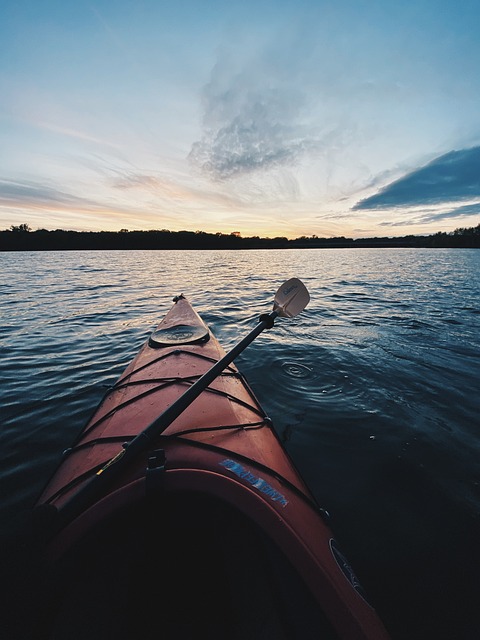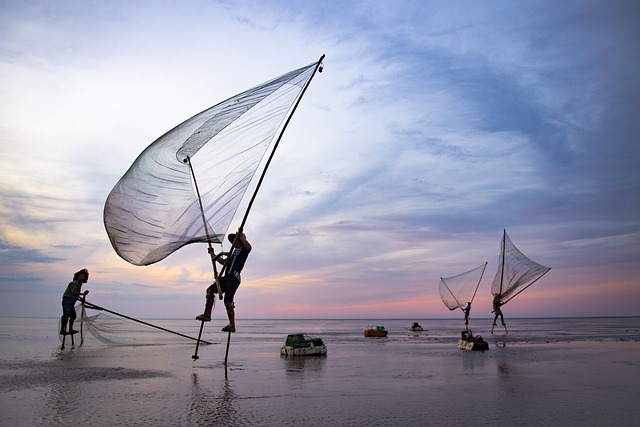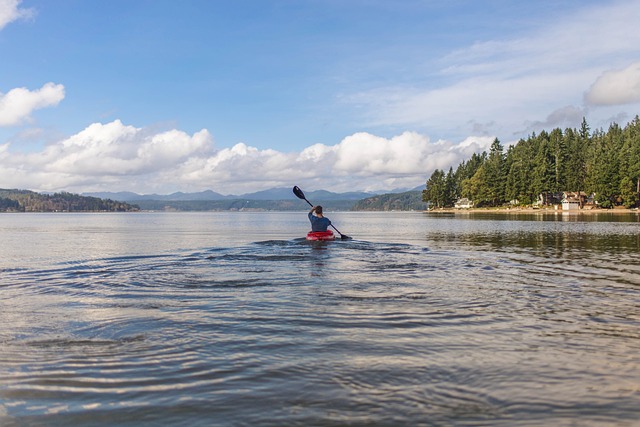When selecting a fishing kayak, anglers must choose between single and tandem models, each offering unique advantages. Single fishing kayaks are perfect for those seeking solitude and precision maneuverability, ideal for navigating tight waterways and ensuring quiet control for effective angling. They are suited for average skill levels and provide a compact, agile experience with ease of casting and stability in calm conditions. Tandem kayaks, on the other hand, are designed for two paddlers, offering enhanced stability for coordinated fishing efforts and the benefit of shared expertise and camaraderie, which can enrich the social aspect of the fishing trip. These larger vessels also come with additional storage space, making them suitable for extended outings where extra gear is necessary. The choice between a single or tandem kayak should be based on personal angling habits, desired performance characteristics, and the need for companionship versus solitude. Selecting the right fishing kayak ensures a practical and enjoyable experience tailored to your specific needs on the water.
When venturing onto the serene waters for a day of angling, the choice between a single or tandem fishing kayak can significantly influence your experience. This article delves into the nuances of both types, offering insights into their performance and suitability based on the angler’s preferences and needs. From evaluating storage capabilities and legroom to understanding the impact of size on stability and maneuverability, we explore the essential aspects of fishing kayaks. Anglers will discover key features that cater specifically to their fishing setup and reflect on the social dynamics of tandem versus the solitary nature of single kayaks. Whether you’re a seasoned angler or new to kayak fishing, this guide will assist in making an informed decision between a single or tandem fishing kayak to enhance your angling adventures.
Understanding the Basics of Fishing Kayaks: Single vs. Tandem Options

When embarking on a fishing adventure from the serene vantage point of a kayak, anglers have the option to choose between single and tandem fishing kayaks, each with its unique advantages. A fishing kayak designed for single occupancy offers unmatched maneuverability, making it ideal for those who prefer to fish alone or in more confined water bodies where space is a premium. The compact layout of a single fishing kayak allows for efficient paddling and easier access to fishing hotspots. It’s also less demanding on balance and coordination, which can be beneficial for individuals who are new to kayaking.
On the other hand, tandem fishing kayaks are engineered to accommodate two anglers, thereby doubling the potential catch while fostering a shared experience. These kayaks provide additional space for gear, which is a boon for extended trips where provisions and equipment need to be stored efficiently. The increased stability of a tandem kayak also means that it can handle rougher waters, making it suitable for more adventurous outings. Moreover, the companionship on a tandem fishing kayak can enhance the overall experience, as one angler can focus on navigating while the other concentrates on casting lines. Both single and tandem fishing kayaks are versatile options for anglers, with their choice largely depending on personal preference, intended use, and the type of fishing envisioned. Whether paddling solo or with a partner, a fishing kayak is an excellent craft to explore the waters and catch a variety of species.
The Pros and Cons of Single Person vs. Tandem Fishing Kayaks

When considering a fishing kayak, anglers often face the decision between single and tandem models. Single person fishing kayaks offer a compact and maneuverable option that allows for easy navigation in tight spaces or through winding waterways. Their streamlined design can provide better tracking and speed on open waters, making them ideal for paddlers who prefer to cover long distances or access remote fishing spots. The reduced size also means these kayaks are typically easier to transport and store. On the other hand, tandem fishing kayaks are designed for two people, offering ample space for gear, a more stable platform due to their wider design, and the advantage of sharing the paddling workload, which can be particularly beneficial during long outings or when facing challenging weather conditions. This shared experience can also enhance social interactions and bonding moments on the water. However, the additional width needed for tandem kayaks may sometimes compromise their ability to slice through the water as efficiently as a single person kayak. Anglers should weigh the pros and cons of each style to determine which fishing kayak fits their specific needs, preferences, and the types of waters they typically fish in. The choice between a single or tandem fishing kayak ultimately depends on personal preference, intended use, and the companions one seeks on the water.
Space and Comfort: Analyzing Storage and Legroom in Both Kayak Types

When considering a fishing kayak, the design of its seating arrangement plays a pivotal role in determining the overall experience on the water. Single and tandem kayaks offer distinct advantages in terms of space and comfort, which can significantly influence an angler’s performance and enjoyment. Anglers opting for a single kayak model will find that all the storage and legroom is optimized for their individual needs. The compact design allows for a more streamlined experience, with ample space to store fishing gear and personal items without compromising on maneuverability. The seats in single kayaks are tailored to provide maximum comfort during long hours of fishing, often featuring adjustable footrests and ergonomic back support to accommodate different body types.
In contrast, tandem fishing kayaks are designed to accommodate two anglers, which naturally comes with its own set of space and comfort considerations. These kayaks offer increased storage options, allowing for a broader array of gear without overcrowding the deck. The additional space also means that each paddler has more room to move around, reducing fatigue on longer trips. The seats in tandem kayaks are crafted to support two individuals comfortably, with considerations for different seating preferences and weight distributions. This collaborative environment not only enhances the fishing experience but also fosters a social dynamic that can be particularly rewarding for partners or friends sharing the journey. When selecting between single and tandem fishing kayaks, it’s important to evaluate your specific needs in terms of space and comfort, as these factors will significantly impact your on-water adventures.
Stability and Maneuverability: How Size Affects Performance on the Water

When selecting a fishing kayak, the choice between single and tandem seating can significantly influence the vessel’s stability and maneuverability on the water. Single kayaks are typically more compact and easier to handle for paddlers with average skill levels. Their smaller size allows for quicker turns and smoother navigation through tight spaces or around obstacles, making them ideal for solo anglers who prioritize agility over carrying capacity. The reduced footprint also means that single kayaks can be more stable in calmer waters, as the wider hull design tends to provide a flatter platform that resists tipping when stationary or casting a line.
In contrast, tandem fishing kayaks are larger and designed to accommodate two paddlers, which can affect their handling on the water. The increased size often necessitates a longer and broader hull to maintain stability with an extra person aboard. This typically results in a slower response time during maneuvers but provides a more stable platform for those who fish in tandem. The trade-off is evident: while tandem kayaks might require more effort to pivot or change direction, the added stability can be a significant advantage when dealing with wind or current, especially when both paddlers work in unison. Additionally, the increased size allows for additional space for gear and catches, which can be a deciding factor for those planning extended fishing trips. When choosing between single and tandem fishing kayaks, anglers must weigh the benefits of maneuverability against the need for stability and storage capacity. Each choice offers unique advantages tailored to the specific demands of the fishing environment and the preferences of the paddler. Keyword: fishing kayak.
Angler-Specific Features: What to Look for in a Fishing Kayak Setup

When considering an angler-specific fishing kayak setup, it’s crucial to evaluate the design and features that cater specifically to the needs of fishing from a kayak. A well-designed fishing kayak should offer ample space for casting and maneuvering around catches without compromising stability. Look for kayaks with a stable hull form, as this will provide the necessary support when you’re in the midst of reeling in a big catch. Additionally, integrated rod holders are a must-have feature, allowing you to position rods for trolling or secure them while not in use.
Storage solutions within the kayak are also pivotal; you’ll want easy access to your gear without having to leave your fishing spot. Consider kayaks equipped with watertight hatches and ample deck storage to keep your tackle, electronics, and personal items secure and dry. Paddle parks can help manage your paddle when it’s not in use, ensuring it doesn’t accidentally interfere with your fishing line or become lost overboard. Lastly, the kayak should accommodate additional accessories like fish finders or livewells depending on your preference and local regulations. Ensure that these can be mounted securely and won’t impede your movement. By carefully selecting a fishing kayak with these angler-specific features, you’ll enhance your fishing experience, making it more enjoyable and productive.
The Social Aspect of Tandem Fishing Kayaks vs. Solitary Single Kayaks

When anglers venture out onto the water in pursuit of their catch, the choice between a single and tandem fishing kayak can significantly influence their social experience. Tandem fishing kayaks are designed to accommodate two individuals, fostering an environment where communication and camaraderie are at the forefront. Paddlers sharing a tandem kayak often find themselves engaging in conversations, sharing techniques, and even assisting each other in maneuvering through challenging waterways. This social dynamic can enhance the fishing experience by providing moral support, dividing attention between casting lines and navigating, and offering an immediate audience to share the thrill of a successful catch.
In contrast, single fishing kayaks offer solitude and personal space, which can be ideal for those who prefer a quiet, introspective setting. Anglers in single kayaks have full autonomy over their movements and can focus solely on their angling strategies. While this independence allows for a highly personalized fishing trip, it also means that the social aspect of the experience is limited to interactions with others after leaving the kayak or through the use of communication devices while on the water. The choice between a single or tandem fishing kayak thus hinges not only on personal preference but also on the desired level of social interaction, which can greatly affect the overall enjoyment and success of a fishing expedition. Keywords: fishing kayak, tandem fishing kayaks, single fishing kayaks.
Making Your Choice: Factors to Consider When Selecting Between Single and Tandem Kayaks for Fishing

When selecting a fishing kayak between single and tandem options, several factors merit careful consideration to ensure the best fit for your angling adventures. Firstly, assess the frequency and nature of your outings. If you often fish solo or prefer the tranquility of undisturbed casting, a single fishing kayak might be more suitable. Its streamlined design typically offers better tracking and maneuverability, which can be advantageous for navigating through tight waterways and reaching prime fishing spots without the need for coordination with a partner.
On the other hand, tandem fishing kayaks are ideal for those who enjoy sharing their passion with friends or family. The additional space not only accommodates another person but also can be used for extra gear, increasing the kayak’s storage capacity. This makes tandem kayaks a top choice for extended trips where gear and provisions are essential. Furthermore, the combined efforts of two paddlers can enhance stability and speed, making tandem kayaks not only comfortable for multiple anglers but also efficient for covering greater distances on larger bodies of water. When deciding between single and tandem fishing kayaks, consider your angling companionship preferences, the types of waters you’ll be navigating, and the gear you plan to bring along. Opting for the right kayak model can significantly enhance your fishing experience, offering both practical and enjoyable advantages on the water.
